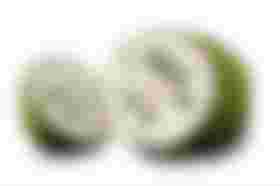BENEFITS FROM GUYABANO

Guyabano is known for its salty fruit and a favorite food of Filipinos. It has a green skin and a stingray, while its flesh is white and saturated. The tree is only medium in size and the leaves are smooth. It grows in many parts of the world, particularly in South America and Southeast Asia, including the Philippines.

The English guyabano or soursop (scientific name Anoya muricata), is a small tree known for its fruit and medicinal properties. This tree originated in tropical America and was brought to the Philippines by the Spaniards. It is known as guayabano or guabanosa in Tagalog, atti in Ibanag, babana in Bisaya and bayubana or guyabana in Ilokano, and llabanos in Bicol.
The fruit is 15 to 20 centimeters long and weighs half to 2 ½ kilos. It is shiny, dark green and covered with soft, green thorns. It has thin skin and white flesh and black bones buried in the flesh. It is high in carbohydrates and contains Vitamin C, Vitamin B1, Vitamin B2, Potassium and dietary fiber. Guyabano is low in cholesterol, saturated fat and sodium.
Its fruit is delicious to eat. Fruit can also be used as an ingredient in making ice cream, candy, shakes, juices and other beverages. Can also make sweets from spinning but not ripe fruit
WHAT NUTRITION AND CHEMICALS CAN BE OBTAINED IN GUYABANO?
Different parts of the guyabano plant can contain many types of chemicals and nutrients that can have health benefits:
-The main substances contained in guyabano are tannins, steroids and cardiac glycosides
-The leaves are oily; myricyl alcohol, sitosterol, and fatty acids such as oleic, linoleic, and stearic acids. It also contains lignoceric acid and anolol
-The fruit contains saccharose, dextrose, and levulose
-The bark contains acetogenin, solamin and triterpenoids, stigmasterol and sitosterol
the bone contains lactones, annomonicina, annomontacina, annonacina, annomuricatina, annonacinona, javoricina
-The juice and flesh of the fruit also contain carbohydrates, fiber, retinol, ascorbic acid, flavonoids, and tannin
WHAT PART OF THE PLANT IS USED AS A MEDICINE, AND HOW ARE THEY USED?
Some parts of the plant can be used as medicine such as:
1. Leaves. The leaves are often boiled and given to the sick to drink. It can also be crushed and applied to certain body conditions.
2. Flowers. The flower can be boiled and given to the sick person to drink.
3. Flowers. Raw fruits are usually milked for use as medicine. Decoction of ripe fruit is also effective in some conditions. Guyabano flesh can also be used as a poultice in certain body conditions.
Guyabano is also used as a remedy for various ailments. It is said to have soothing, sweating and nauseating properties. The juice from the boiled leaves is used as an antidote to bed bugs and lice.
To reduce the fever, boiled leaves can be taken or bathed. Crushed leaves can also be applied to the blister skin to speed recovery. Cheap guyabano leaves can be rubbed on the skin to relieve rheumatism and other skin infections such as eczema. When applied as the wound heals, it can also remove or reduce the scar caused by the wound. Boiled leaves can also be used as a wet compress on sore feet and other types of inflammation.
Fruit juice is taken as a remedy for urinary tract infections such as urethritis and hematuria and even for liver problems. Powdered or crushed seeds of guyabano mixed with soap and water are effective sprays on caterpillars, armyworms and leafhopper on plants.
As a medicine, the fruit can be used to treat cough, scurry and fever. Seeds and green fruits can be used as a laxative and as a remedy for dysentery or as a blood thinner. The roots and leaves can be used to treat colic and convulsions. A mixture of leaf or root juice can be made into a sweat and can also be applied to skin irritation and rheumatism.
WHAT DISEASES CAN GUYABANO TREAT?
1. Diarrhea. The raw fruits of guyabano can be used for diarrhea conditions. The juice of ripe fruit of guyabano can also be used.
2. Lisa and lice. Washing the head affected by lice and lice using the leaves of guyabano. The use of guyabano powdered bones is also effective.
3. Drying of the feet. The leaves can be applied or washed to relieve swelling of the feet.
4. Eczema. Inflammation of the skin can also be relieved with the help of grafted crushed ground leaves.
5. Rheumatism. Applying oil from the guyabano leaf and its raw fruits is effective for joint pain.
6. Diabetes. The root, bark and leaves of guyabano can help with diabetes.
7. Cancer. Several studies have been conducted that prove that the juice of the guyabano fruit is effective, as well as being used to prevent the spread of cancer cells in the body.
8. Cold. Severe cold sores can be treated by drinking the leaves of guyabano leaves. The flower can also be used for the same effect.
Disclaimer: Herbs can help with a variety of ailments. But many of them do not yet have enough education and no certainty yet. It cannot be guaranteed that they are effective because the effect of herbal medicines may work on some, but on others it may not work. As with any medicine, it is important to consult your herbal doctor.


I like it.